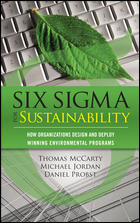NASA. Volkswagen. BP. It’s not hard to find examples of quality gone awry. The consequences of the Challenger disaster, VW’s Dieselgate, and the Deepwater Horizon were tragic and far-reaching. While these are some of the most well-known incidents, stories of quality failures are numerous and almost constant.
Murphy’s Law seems to apply to all areas of manufacturing and technology: What can go wrong, will go wrong. In many cases, preventing problems is a complex interplay of factors and stakeholders. But one thing is certain. Pretending that nothing unfortunate will happen is not the way to prevent disaster; a quality system should not depend on luck. Risks are ever-present and it pays dividends to think about them before they happen.
Risk based thinking is one solution. It’s one of the big changes in the ISO 9001 update, but more than that, it’s a way to prevent problems before they occur and improve the business along the way. Avoiding risk doesn’t just mean being cautious. It’s about maximizing opportunities.
How Does It Work?
The first step is to examine the risk management activities in the organization. Risk assessment—one of the most commonly used terms related to risk—is next. This would entail several steps, including identifying risks that could affect the organization, analyzing the causes and consequences of these potential events, and then evaluating how likely the risk is to occur along with the consequences. Risk treatment would be the final step in this process, in which companies address any risks and determine how effective the treatments are.
Prevent Losses
The main idea behind risk based thinking often is preventing losses, which should be an easy sell to any organization. And the sooner that a problem can be solved, the better. When a problem is fixed in the design phase, it is barely a problem. On the other hand, if a design flaw reaches consumers, the problem has escalated and so have the consequences. Consider a medical device company faced with an FDA recall or warning letter. In such cases, companies throw all their resources behind the problem, resources that would have been better spent before the incident occurred.
But all the good ideas and priorities are not enough. It’s important to put these plans into use. This is where software comes in.
Failure Mode and Effects Analysis (FMEA) is one well known method to reduce or eliminate quality problems. Failures can be evaluated at the design stage, during production, or through the supply chain. FMEA can also be used alongside other methods such as Fault Tree Analysis (FTA), Process Hazard Analysis (PHA), Hazard and Operability (HAZOP) studies, and Event Tree Analysis (ETA). A centralized software to manage this information and data can make the process much smoother. Rather than using Excel files, companies can streamline the information and focus on the risks at hand.
If FMEA software is used throughout the organization, it is possible to minimize almost all of the difficulties associated with FMEA. These include determining the relative importance of severity, occurrence, detection (SOD) variables, reducing the subjectivity of these estimates, and making it easier to locate these variables.
Getting started with risk based thinking may mean a change in the way your company operates—and that a good thing. Software can protect your organization from defects and a host of other potential problems.
Opportunities Everywhere
Although it is a crucial part of risk based thinking, minimizing losses should not be the only incentive. How might risk based thinking help your business advance? Paying careful attention to data is one way. Examining your business closely can yield valuable insights that can improve processes and the business as a whole.
Not only that, research has shown that risk based thinking, when done correctly, can lead to better decisions. These in turn can reduce losses or the likelihood of them, improve response time, enhance learning, lower stress, and improve communication. Who wouldn’t want to shorten response times, not to mention reduce stress? But risk based thinking must be employed on a day to day basis, not simply a once a year event that’s crossed off a checklist.
Better Communication
Let’s take a closer look at the improved communication possible with risk based thinking. Often it’s not one single action or one piece of equipment that causes a severe failure. Rather, companies perhaps notice the ever-growing risks but then don’t address them accordingly.
If done well, risk-based thinking is ongoing, practical, personal and involved. It is a hands-on way of addressing challenges before they escalate. Being proactive rather than reactive can mean the difference between a calm discussion and a barked order. In this way, the risk of failure can propel companies forward.
Risk based thinking is not a cure-all for everything that ails your organization. If your business faces competitors in a saturated market, it may be enough to just notice the problems in front of you. But ignoring potential risks is not the way to get ahead either. Rather, consider what problems lurk below the surface and you’ll be ready to face them if they do appear.
Ignoring the possibility of failure doesn’t provide immunity. It also doesn’t improve an organization. Eventually something will go wrong. But if you’ve done risk based thinking, you will have anticipated the event and know how to treat it.





